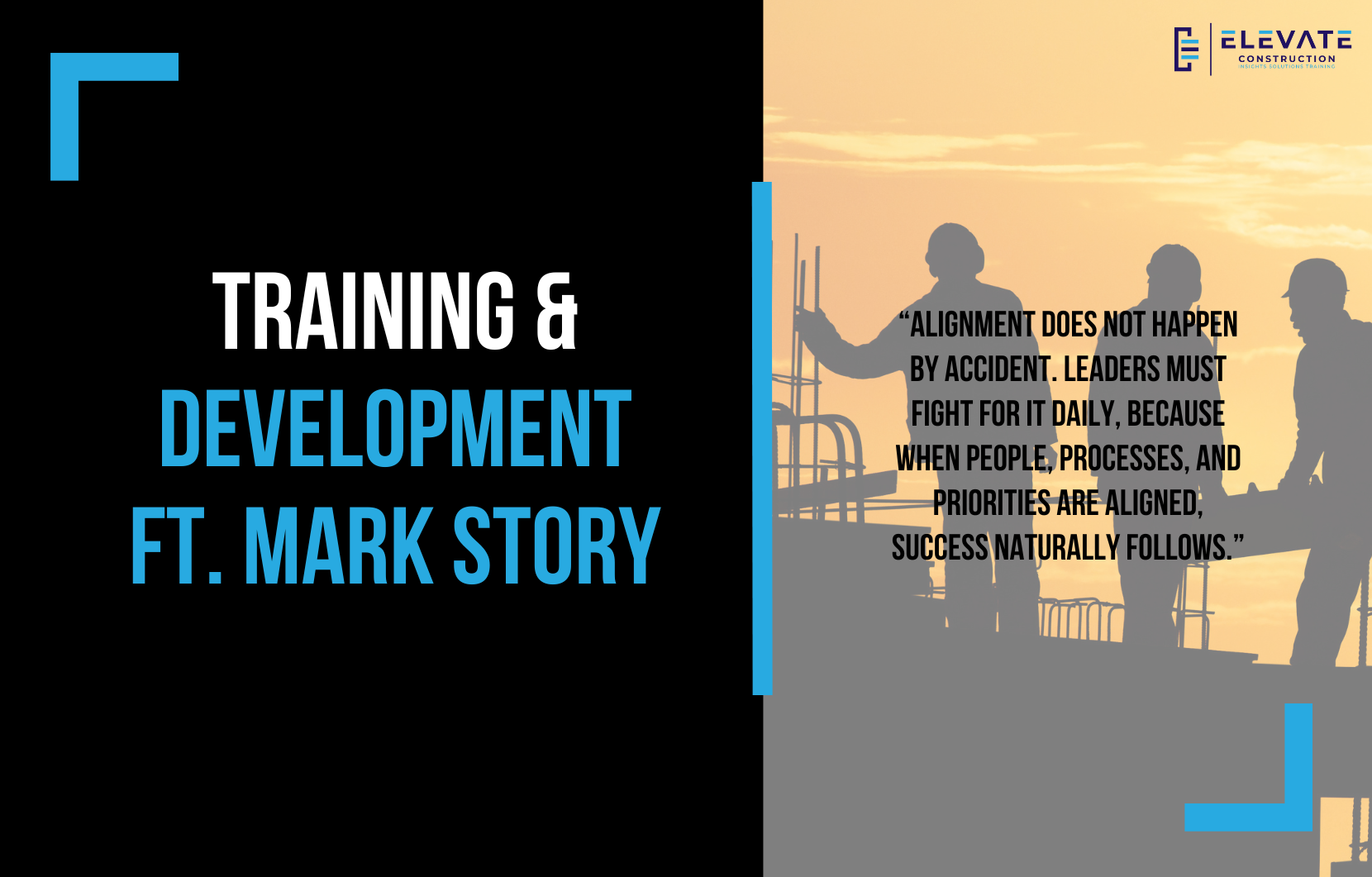Alignment and Leadership
I often find myself reflecting on how difficult it can be to keep everything aligned on a project. In construction, alignment is not a one-time event or a box you check at the beginning of a job. It is something you fight for every single day. Misalignment creeps in quietly, almost unnoticed at first, and before long it can cause frustration, delays, and even damage to the culture of a team.
My good friend Mark Story once shared something with me that really stuck. He said, “If you do not intentionally align people, processes, and priorities, the natural drift is always toward chaos.” That statement hit me hard because it perfectly describes what I have seen over the years. When we assume alignment will just happen on its own, it almost always unravels. People begin pulling in different directions, trade partners become confused about expectations, and leadership ends up spending more time putting out fires than leading.
When I look back at projects that went exceptionally well, the difference was always the level of intentional alignment. Alignment around vision, alignment around goals, alignment around roles, and alignment around schedules. Everyone knew why we were building, what success looked like, and how their specific role contributed to the bigger picture. And it was not just words on a poster or a mission statement buried in a project manual. It was active, living alignment that was revisited often.
I remember one particular project where we gathered the team every morning for a short huddle. The goal was not only to talk about tasks and safety but to remind ourselves of the larger vision for the project. We talked about the community we were building for, the families who would one day live there, or the workers who would benefit from safer conditions. Those small reminders kept everyone’s eyes on something greater than their own checklist. That is alignment in action.
Contrast that with projects where alignment was ignored. I have been on jobs where each foreman had their own version of the plan, each trade was focused on protecting their turf, and leadership was disconnected from the day-to-day challenges in the field. The schedule became a battleground, RFIs piled up, and meetings felt more like blame sessions than planning opportunities. Those jobs drained energy from everyone involved. The work still got done, but at what cost to morale and culture?
Leadership is where alignment starts. If leaders are not clear, the team will never be clear. It is not enough to just issue directives or hand out schedules. Leaders must create space for conversations, listen deeply, and ensure that everyone has both clarity and buy-in. Alignment is not top-down. It is something we build together. When people feel heard and respected, they naturally align more closely to the team’s vision.
Another truth I have learned is that alignment is fragile. It requires constant attention. A change order, a safety incident, or a rumor about the schedule can quickly cause confusion or anxiety. If leaders are not proactive, that small crack widens into real misalignment. This is why I believe leaders need to walk the job, talk to crews, and spend time in the field. You cannot manage alignment from behind a computer screen. You have to be present, engaged, and willing to reset the team when things drift.
Mark Story’s insight has shaped how I now approach projects. Instead of assuming alignment will last, I treat it as something that must be actively maintained. Like a carpenter checking measurements before cutting, I try to constantly verify whether our people, processes, and priorities are still in line. If they are not, I see it as my job to stop, reset, and realign before moving forward.
At the end of the day, alignment is not about perfection. It is about commitment. Teams will always face challenges, but if we are aligned in vision and purpose, those challenges become opportunities to grow stronger together. Without alignment, even the most talented team will struggle. With alignment, even difficult projects can become a source of pride and fulfillment.
Takeaway: Alignment does not happen by accident. Leaders must fight for it daily, because when people, processes, and priorities are aligned, success naturally follows.
If you want to learn more we have:
-Takt Virtual Training: (Click here)
-Check out our YouTube channel for more info: (Click here)
-Listen to the Elevate Construction podcast: (Click here)
-Check out our training programs and certifications: (Click here)
-The Takt Book: (Click here)
Discover Jason’s Expertise:
Meet Jason Schroeder, the driving force behind Elevate Construction IST. As the company’s owner and principal consultant, he’s dedicated to taking construction to new heights. With a wealth of industry experience, he’s crafted the Field Engineer Boot Camp and Superintendent Boot Camp – intensive training programs engineered to cultivate top-tier leaders capable of steering their teams towards success. Jason’s vision? To expand his training initiatives across the nation, empowering construction firms to soar to unprecedented levels of excellence.
On we go

